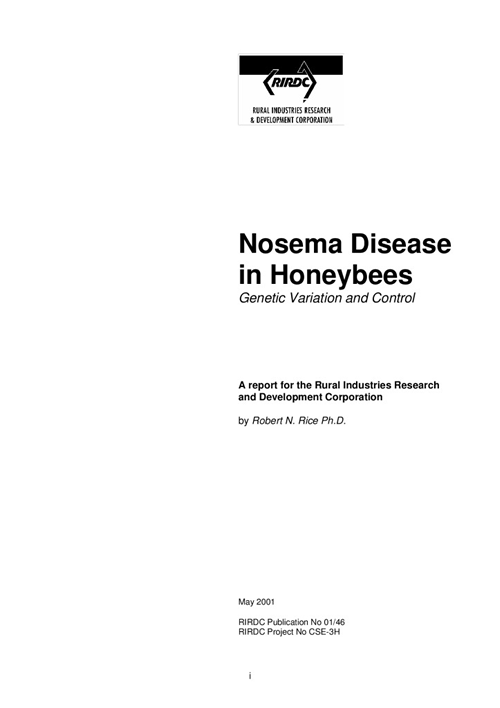The first objective of this report was to locate and then determine the base composition of structural DNA sequences specific to the adult honeybee parasite Nosema apis. N. apis, the causative agent of nosema disease in honeybees. This disease is considered the most economically important disease of adult honeybees in Australia and the world (Bailey and Ball, 1991; Matheson, 1993a).
The second objective was to use the DNA sequence data to (a) determine the taxonomic relatedness of N. apis to other microsporidia, (b) assess genetic variation between Australian isolates of N. apis, and (c) determine whether detection of virulent and avirulent isolates of N. apis is possible.
An additional objective was included to examine the potential of a novel control method for nosema disease and a model system was designed to test the effectiveness of thymol as a novel control agent for nosema disease.





